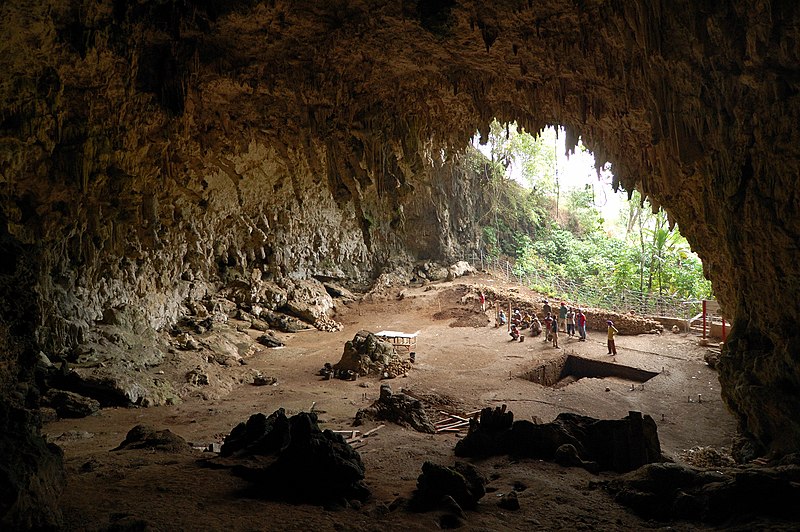.
Anak Ranakah (Child of Ranakah), new lava dome formed in 1987 on the outer flanks of the Poco Leok caldera, Flores, Indonesia: photo by William Rohi (Volcanological Survey of Indonesia)
In the evolution dream a group of us is being conducted through the cave site of the archeological excavation project by a kindly plain older woman, with pleasant face and educated accent, white haired, wearing a long green laboratory coat upon which is affixed a round white badge. She is telling us, patiently, as though sensitive to the shortcomings of our powers of attention, about the ways of these small, slope-chinned, flatfooted cave dwellers: these curious, lightly-furred, hobbit-like little people. As she talks we can see them silently going about the business of their day in the great vaulted space of the cave beyond; a space, hollow as the cranial recess of some vast recumbent creature, to which, with their busy comings and goings, they give the appearance of a natural history museum diorama, but a diorama that that has become animated, a sculptural tableau into which some floating dream forces have breathed life. These little people, she says, might well have made better ancestors.
But, and now her voice seems oddly plaintive, they could never have lasted. There had been a freak genetic mutation, and this part is not yet fully understood. It seems that somehow their brains had actually adapted to altruism...
Someone in the group coughs. Others glance at their watches. Droplets of condensed moisture slowly descend the dark, slick cavern walls. Is it merely the dim lighting in the cave playing tricks that makes her eyes seem to glisten as she begins to speak once more, or are those real tears?
Cave where remains of Homo floresiensis were discovered in 2003, Lian Bua, Flores, Indonesia: photo by Rosino, 2007

